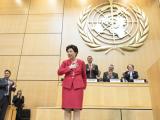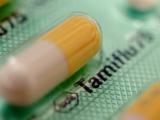Dec 30, 2009
Report details New York high school outbreak
A report released today by the New England Journal of Medicine (NEJM) dissects one of the earliest and largest school outbreaks of H1N1 flu, at a high school in the New York City borough of Queens in April. There were 124 confirmed cases—none of them severe—in students and staff, and more than 800 students and employees reported a flu-like illness. The authors estimated the median incubation period at 1.4 days and the reproductive number (additional cases generated by each case) at 3.3.
http://content.nejm.org/cgi/content/full/361/27/2628
Dec 31 NEJM report
One Novartis pediatric vaccine dose may suffice
With the help of an adjuvant, a Novartis H1N1 vaccine at half the standard dose may protect children 3 to 17 years, according to a NEJM letter today. The findings, from Costa Rican and Novartis researchers, showed protection after 22 days among 9- to 17-year-olds after one 15-microgram (mcg) dose or a 7.5-mcg dose with an adjuvant. But among 3- to 8-year-olds, only the adjuvanted 7.5-mcg dose provided an adequate immune response. Adjuvanted flu vaccines are not approved for US use.
http://content.nejm.org/cgi/content/full/NEJMc0909988
Dec 30 NEJM letter
China launches broad epidemiologic investigation
China will launch a two-pronged nationwide investigation of H1N1 influenza to improve case counts and understanding of the disease's communicability, Xinhua News reported. One arm will survey 54,000 people in 12 provinces, cities, and regions in three time periods in 2010, while the other will involve one-time collection of blood samples from 12,400 people in 31 provinces and additional political units.
http://news.xinhuanet.com/english/2009-12/30/content_12731738.htm
Dec 30 Xinhua News report
Eastern Europe, southern Asia are flu hot spots
Central and Eastern Europe are currently the hottest spots for pandemic flu activity, but activity is also intense in northern India, Nepal, and Sri Lanka, the World Health Organization (WHO) said in its weekly H1N1 update today. Flu activity seems to be waning in most of the rest of the Northern Hemisphere, but limited data indicate "high-intensity transmission" in Algeria, Tunisia, and Egypt. More than 208 countries and territories have reported confirmed H1N1 cases, with 12,220 deaths.
http://www.who.int/csr/don/2009_12_30/en/index.html
WHO H1N1 weekly update
New RT-PCR tests yield promising results
A study in the Journal of Molecular Diagnostics found that new rapid RT-PCR tests accurately detected influenza A and B and respiratory syncytial virus (RSV) in nasopharyngeal specimens. Semiautomated and fully automated versions of the RT-PCR assay were able to detect humanH3N2 and H1N1, including novel H1N1, andcould distinguish flu A of allsubtypes from flu B and RSV. Both versions showed greater overall and flu-A-specific sensitivities than the FDA-approved ProFlu+ test.
http://jmd.amjpathol.org/cgi/content/abstract/12/1/74/?rss
Jan J Mol Diagn study
Aid group: North Korea issues flu alert
A humanitarian agency said North Korea recently issued a nationwide alert about its apparently worsening outbreak of pandemic flu, according to the Washington Post. The Seoul-based Buddhist aid group Good Friends said that North Korean officials declared that novel H1N1 patients should be given priority. The group said the statement was of a type issued only twice before, for war-related casualties in the 1950s and in 2002. South Korea has shipped 500,000 doses of antivirals to the North.
http://online.wsj.com/article/SB126217264529610047.html
Dec 31 Washington Post article



















